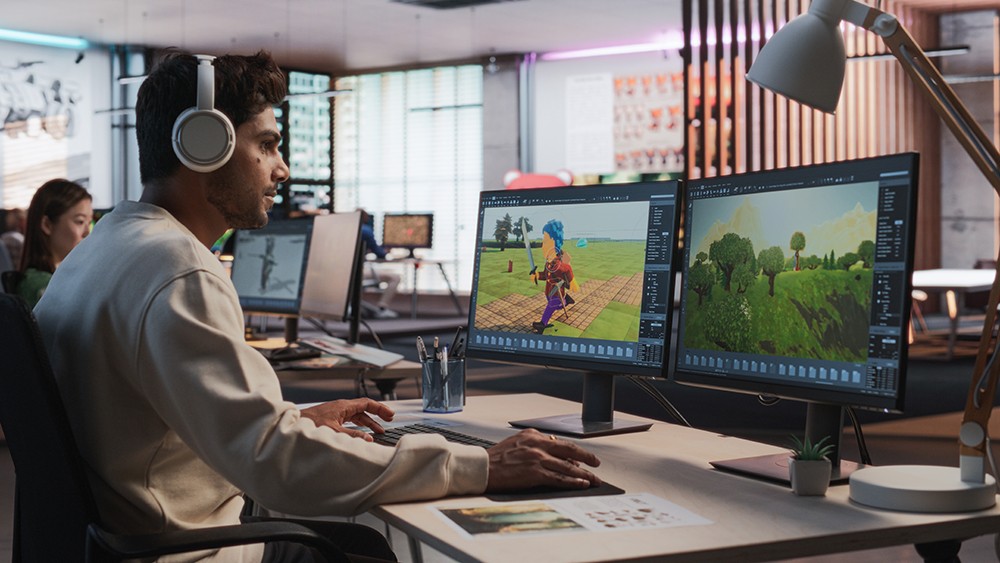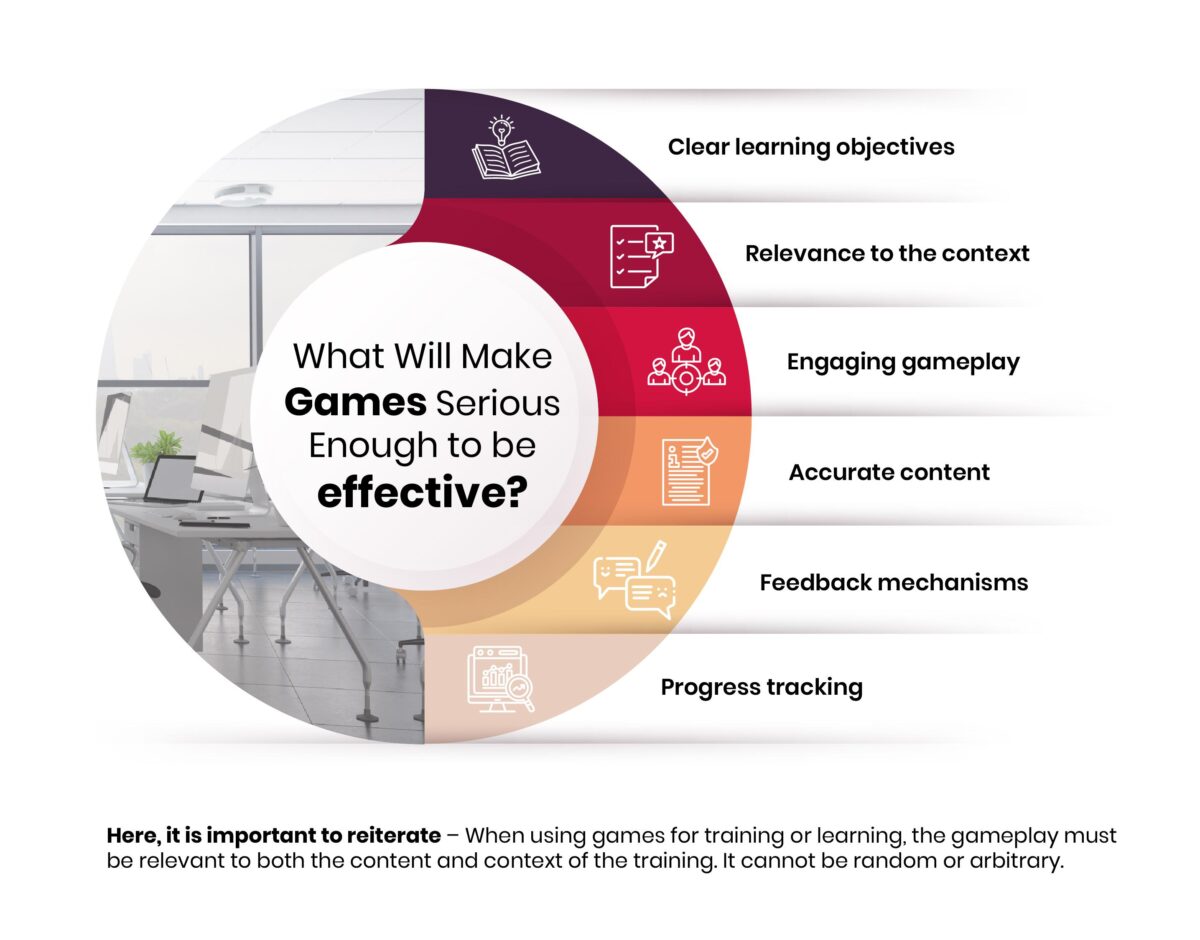The line between entertainment and education is becoming increasingly blurred, especially in the realm of gaming. These games go beyond mere amusement, and harness the power of interactive digital experiences to deliver engaging, and effective learning.
As technology continues to evolve, game-based learning is poised to revolutionize education and training, offering innovative ways to develop skills and knowledge.
What is game-based learning, and why can it be used for even serious subjects?
Let’s start from the beginning: every game has three sections —the problem scenario or story, the actions taken to solve the problem, and the conclusion, which can either be positive or negative. It’s not necessary for players to win every time they play, but there is always a definite end, and a result of the decisions made while playing.
For example, finance is a serious topic involving money management, investment, and capital raising. But, many of us would have understood the fundamentals of business and economics by playing Monopoly, the legendary boardgame.
The Rise of Serious Games

Now, let’s take a look at how serious games started becoming increasingly popular for learning and development. Serious gaming is not a new phenomenon. Game developers have long incorporated realism and immersive storytelling elements into their creations to enhance the player’s experience. Serious games can be designed with a primary purpose other than pure entertainment. They can educate, train, or solve problems, leveraging the engaging nature of games to achieve significant learning outcomes. These games may span various fields, from education and healthcare to corporate training and social change.
Educational Impact

In the educational sector, serious games can facilitate active learning, critical thinking, and problem-solving skills. By integrating educational content into an interactive and engaging format, students are more likely to retain information as well as enjoy the learning process. For instance, games that simulate historical events or scientific experiments allow learners to experience and explore concepts dynamically. Games like Snakes and Ladders can teach children the concept of math, while putting together a complex puzzle that requires collaboration can teach team-building skills in the corporate sector.
Training and Simulation

In corporate and military training, serious games can offer immersive simulations that replicate real-world scenarios. These simulations provide a safe environment for employees or trainees to practice skills, make decisions, and witness the consequences of their actions without real-world risks. For example, flight simulators and narrative-driven games can help to train pilots on emergency protocols, and enhance practical skills and preparedness.
Healthcare and Therapy

Serious games are also making significant strides in healthcare. They can be used for physical rehabilitation, cognitive therapy, and mental health treatment. Games designed for physical therapy can motivate patients to complete exercises, track progress, and provide real-time feedback. Cognitive games, on the other hand, help treat conditions such as ADHD or Alzheimer’s by enhancing memory, attention, and problem-solving skills.
Social and Behavioral Change

Beyond education and training, serious games are instrumental in driving social and behavioral change. Games addressing issues such as climate change, social justice, or public health can raise awareness, change attitudes, and inspire action. For example, a game could teach players about the importance of sustainability for their survival. By engaging players in meaningful narratives and interactive scenarios, these games foster empathy. and a deeper understanding of complex issues.
The Future of Serious Gaming
 Advancements in technology, such as virtual and augmented reality, will create even more immersive gaming experiences. Artificial intelligence could enable personalized, and adaptive gaming experiences. However, developing high-quality serious games require a significant amount of investment and collaboration between game designers, subject matter experts, and educators.
Advancements in technology, such as virtual and augmented reality, will create even more immersive gaming experiences. Artificial intelligence could enable personalized, and adaptive gaming experiences. However, developing high-quality serious games require a significant amount of investment and collaboration between game designers, subject matter experts, and educators.
Implementing Serious Games in Various Sectors
So, where can we use serious games? Everywhere! Some of the examples are:
- Corporate: For onboarding, skill development, team building, product training, compliance training, harassment and discrimination policies, and more.
- Healthcare & Pharma: VR games for simulating surgeries and medical procedures ; role-playing games for learning about new drugs, and interacting with healthcare providers; simulations for nurses and doctors to practice patient care; decision-making; and emergency response.
- Education: Games that teach science, technology, engineering, and math through interactive experiments and challenges, along with interactive games that enhance vocabulary, grammar, and conversation through real-life scenarios and storytelling.
- Military: Simulations for training in strategy, decision-making, and equipment operation.
- Public Policy: Helping citizens understand complex policy issues.
- Scientific Research: Engaging players in solving fundamental scientific problems.

Measuring the Impact of Serious Games
Effectiveness can be measured through pre- and post-game assessment, tracking in-game performance metrics, surveys, and long-term follow-ups to assess retention, and behavior change.
Unlocking the Potential of Serious Games in Education and Training
Let’s explore some questions that may arise when discussing the role and impact of serious games in education and training.
First, are serious games only for children and students? Absolutely not. These interactive tools are designed for learners of all ages, including adults, making them versatile for various educational and professional settings. Studies have shown that serious games often lead to better engagement, knowledge retention, and skill development compared to traditional learning methods. This increased effectiveness can be attributed to their interactive and immersive nature, which captures learners’ attention more effectively than conventional techniques.
When it comes to developing serious games, costs can vary widely. While some high-end custom games may be expensive, there are also many affordable options and platforms available that cater to different budget constraints. However, it’s important to note that serious games are not intended to replace traditional teaching methods but rather to supplement them. They add an engaging and interactive dimension to the learning experience, enhancing overall effectiveness.
Incorporating serious games into an organization or classroom involves identifying specific learning objectives and researching existing games that align with those goals. If existing games do not meet your needs, creating custom games or partnering with developers for tailored solutions is a viable option. This approach ensures that the games used are directly relevant to the learners’ needs and the desired educational outcomes.
Conclusion
Serious games represent a promising frontier in education and training, leveraging interactive digital experiences to create engaging, effective, and enjoyable learning opportunities. As technology advances, their potential applications will expand, offering new possibilities for learning and skill development.
By embracing the power of serious games, we can create impactful experiences that educate, train, and inspire across various sectors. At Impelsys, we explore how games, traditionally seen as mere entertainment, evolve into powerful tools for learning, training, and even healthcare. We are excited to be part of this transformative journey shaping the future of learning and development through innovative gaming solutions.
Authored by: Nishita Rakshit